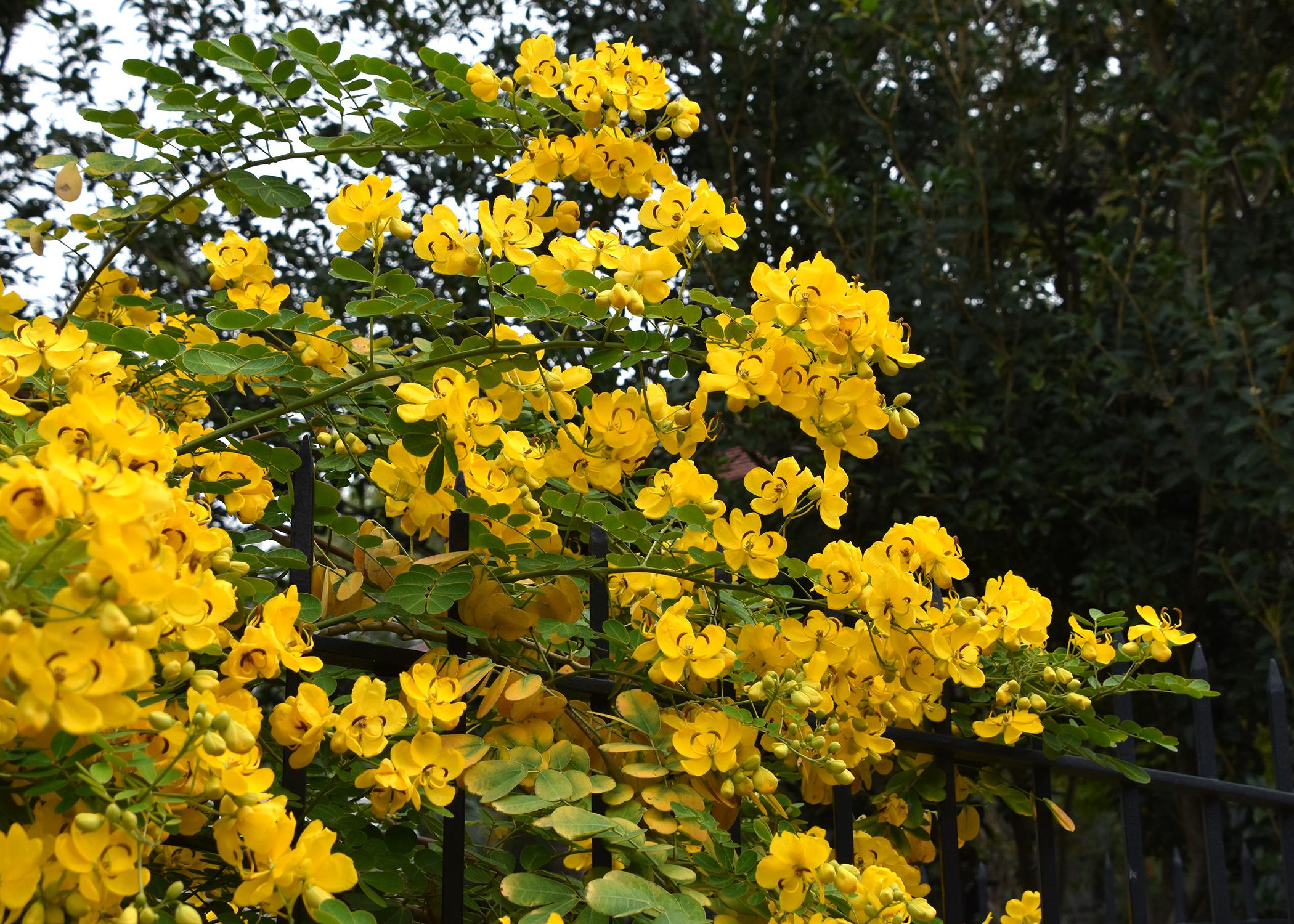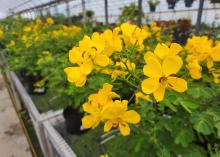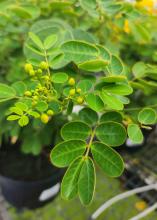Information Possibly Outdated
The information presented on this page was originally released on November 21, 2022. It may not be outdated, but please search our site for more current information. If you plan to quote or reference this information in a publication, please check with the Extension specialist or author before proceeding.
Winter cassia are great Coastal landscape plants
As we enter winter, many gardeners consider this a less interesting outdoor season compared to the warmer spring and summer seasons.
To add color, we depend on cool-season annuals like dianthuses, pansies, violas, and the various kales and cabbages. Of course, we’re also entering camellia season, but that’s really about it.
Until we’re surprised by a forgotten landscape plant that’s about to burst into action from nowhere.
Winter cassia, known botanically as Senna bicapsularis and sometimes Cassia bicapsularis, is not a common landscape plant. It’s a tropical plant with yellow flowers that resemble golden butterflies, causing it to sometimes be called butterfly bush.
Winter cassia is one of those show-stopping plants, especially considering the prolific blooms it produces in the winter. The effect is heightened because the brightly colored blooms seem to appear out of nowhere.
I still remember moving to Mississippi 15 years ago and being astonished when I saw my first winter cassia.
Beginning in November, the golden-yellow flowers are displayed in loose clusters, each having up to 12 individual blossoms. Each individual flower has five petals. The curved shape of the stamens and pistil give it the butterfly appearance.
The large flower clusters, which form toward the ends of the slender branches, can be so heavy that the branches are pulled down, giving many plants a distinctive vase-shaped form. This effect can be accentuated after a rain or heavy dew.
The leaves are pinnately compound with three to five pairs of oval-shaped leaflets. The foliage is a deep green in the summer, but with falling temperatures, these leaflets display a greenish-yellow tint.
While the leaf shape and color do have landscape interest all year, winter cassia primarily fills in garden gaps and provides a consistent backdrop for more showy summer plants.
Be sure to plant your winter cassia in a full-sun location for the best growth and flower production. We planted some at the Mississippi State University Coastal Research and Extension Center in Biloxi along our service drive in partial shade, and these plants did not flower reliably and eventually did not survive.
Good drainage is a must, as cassia do not like wet feet. They also do not tolerate droughty soil conditions.
Winter cassia is hardy from 9A -- the coastal Mississippi counties -- through Zone 11, which is further south.
It is common for this landscape plant to die back to the ground during extreme cold snaps on the coast. A layer of mulch is a good idea once nighttime temperatures start dipping into the 30s.
That said, there are some nice large specimens -- up to 8 feet by 8 feet -- to be found growing in protected microclimates along the coast. In more northern Mississippi counties, I believe winter cassia could be grown in large containers so the plant can be moved into winter protection.
Winter cassia is a landscape plant that deserves more attention in our Mississippi landscapes.




